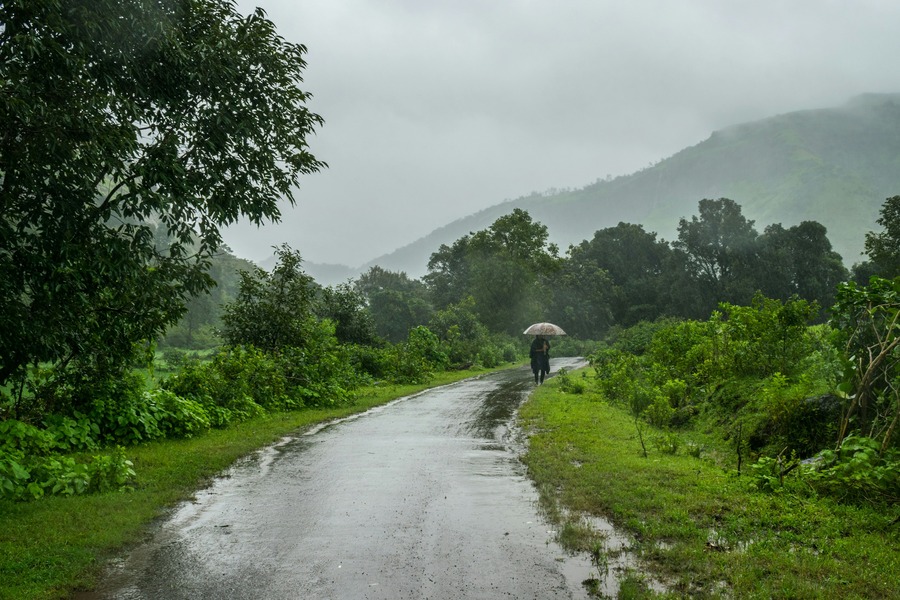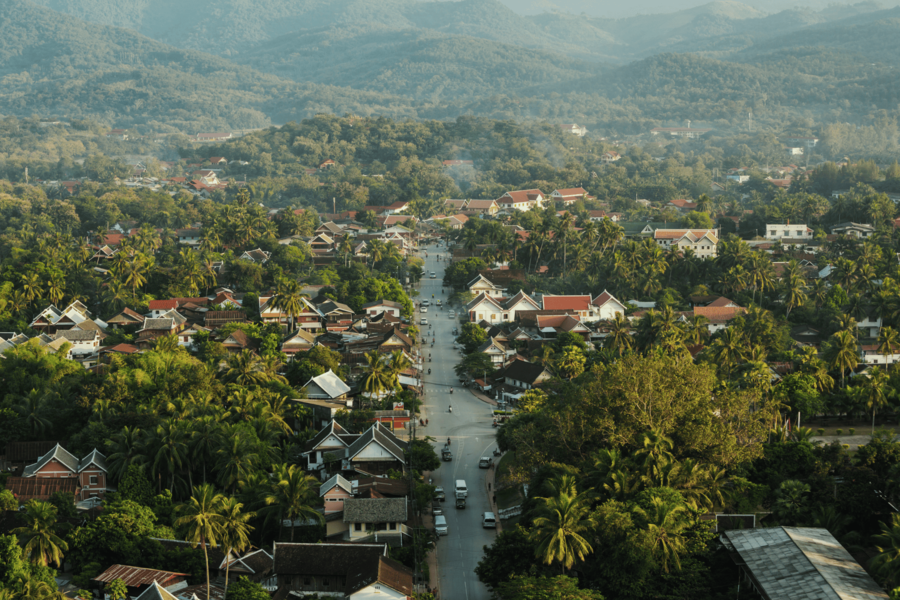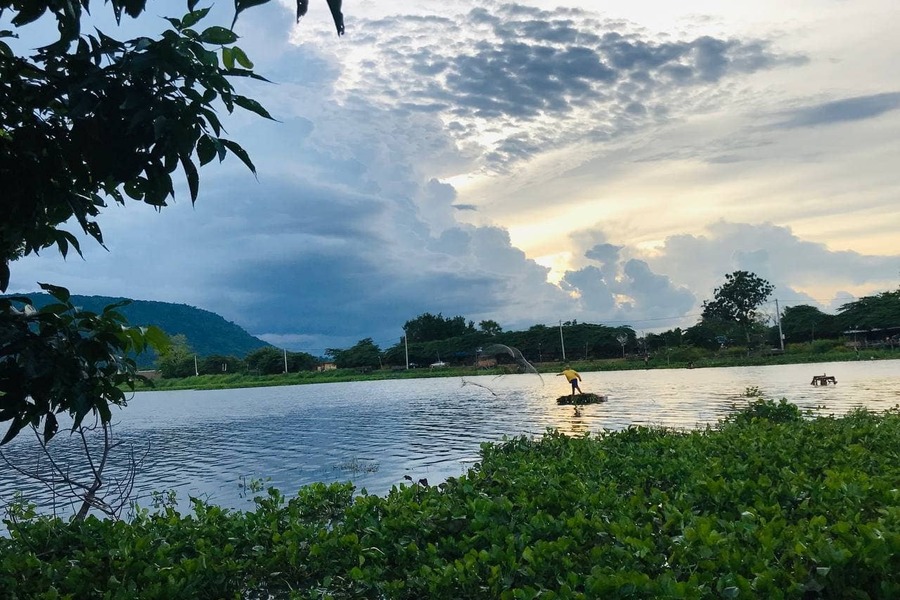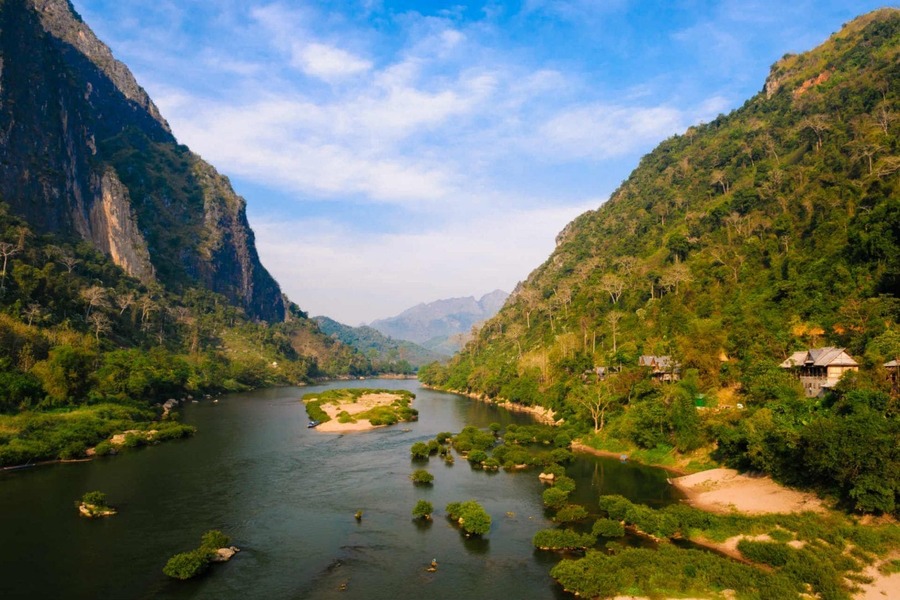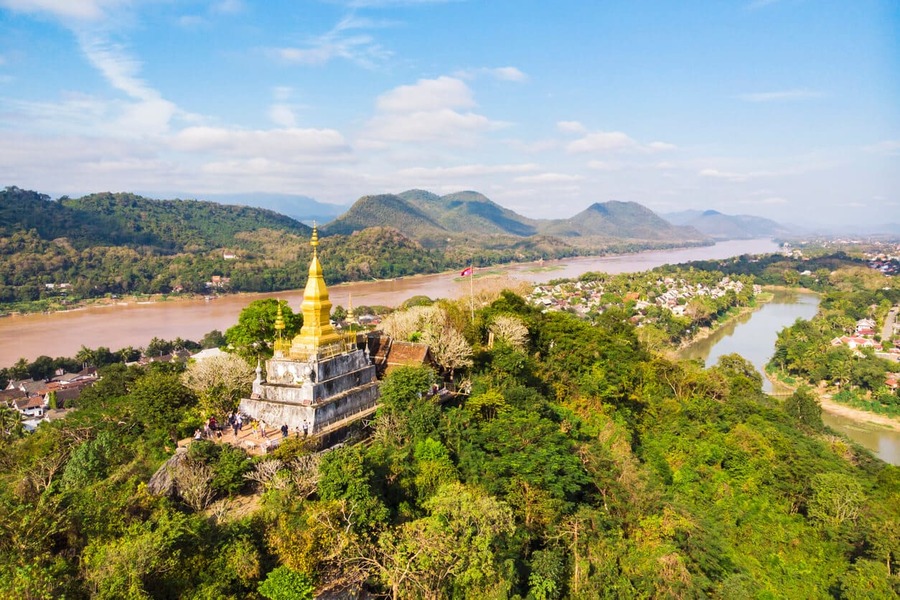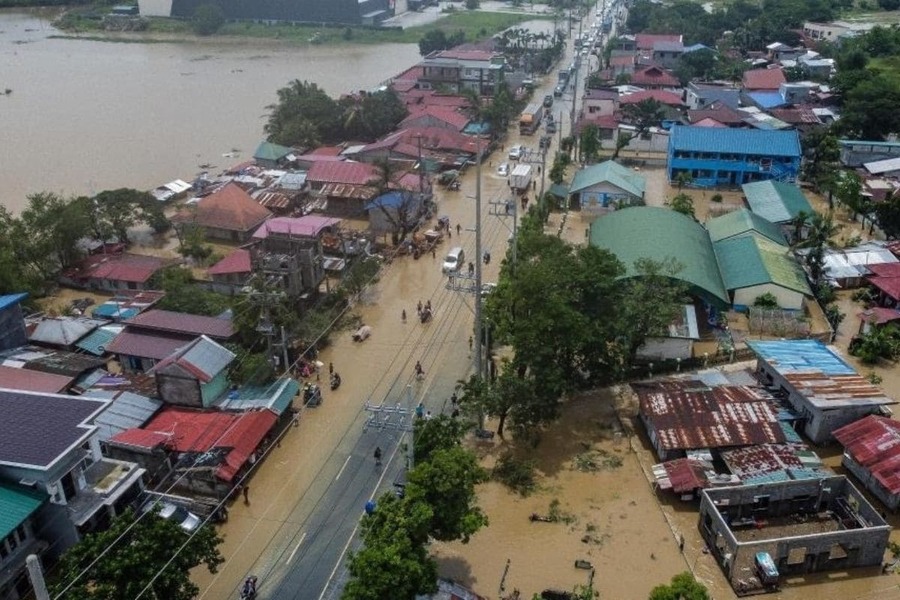Planning a trip to Laos requires understanding its tropical monsoon climate to avoid challenging travel conditions. While Laos is a year-round destination with stunning landscapes, rich culture, and warm hospitality, certain months can pose difficulties due to heavy rain, extreme heat, or poor air quality. This guide answers key questions - Does it rain a lot? Is it safe to travel during the rainy season? What is the wettest month? And provides a month-by-month weather breakdown to help you plan your trip wisely.
Hard Time to Visit Laos
Generally it is March to April and June to August, depending on your priorities and tolerance for heat, rain, or smoke. Here’s why:
- March-April (Hot Dry Season): These are the hottest months, with temperatures reaching 38°C (100°F) in lowlands like Vientiane and Pakse, and up to 45°C (113°F) in some northern areas. High humidity and the burning season (March-May), when farmers burn fields for rice planting, create smoky haze, especially in northern Laos (e.g., Luang Prabang). This can irritate eyes, worsen respiratory issues, and obscure views, making trekking and sightseeing uncomfortable.
- June-August (Peak Rainy Season): These months see the heaviest rainfall, particularly in southern Laos, with August being the wettest month across the country, receiving 200-300 mm (8-12 inches) of rain. Dirt roads become muddy, landslides are common in mountainous areas, and flooding can disrupt travel, especially in rural regions.
However, the “worst” time depends on your preferences. If you’re sensitive to heat or smoke, avoid March-April. If you dislike frequent rain or plan to visit remote areas, steer clear of June-August.
Does It Rain a Lot in Laos?
Yes, Laos experiences significant rainfall during its wet season (May-October), with 70% of annual rainfall occurring in this period. The Bolaven Plateau in Champasak is one of the wettest areas, receiving over 3,700 mm (145 inches) annually, while Luang Prabang sees around 1,360 mm (54 inches). Rain typically comes in short, heavy downpours, often in the afternoon or evening, rather than all-day storms. However, in peak wet months (July-September), prolonged showers and flooding can occur, especially in southern lowlands and along the Mekong River.
In contrast, the dry season (November-April) sees minimal rain, with December and January often receiving less than 10 mm (0.4 inches) in Vientiane. Northern highlands like Phongsaly may get slightly more rain year-round due to their elevation.
Is It Safe to Travel During the Rainy Season in Laos?
Traveling during the rainy season (May-October) is generally safe but comes with challenges:
- Road Conditions: Dirt roads in rural areas, such as those in northern Laos (e.g., Luang Namtha, Phongsaly), become muddy and impassable, increasing travel times. Landslides are a risk in mountainous regions like the Annamite Range. Paved roads, like those between Vientiane and Luang Prabang, are more resilient but can still face delays.
- Flooding: Low-lying areas along the Mekong, especially in Vientiane and southern Laos, may experience flooding, particularly in August-September. Recent dam constructions (e.g., Chinese super-dams) have worsened water level fluctuations, impacting river travel safety.
- Health Risks: Mosquitoes thrive in wet conditions, increasing the risk of dengue fever, though malaria is rare except in remote areas. Use DEET-based repellent and long sleeves, especially in rural regions. Leeches are common on wilderness hikes during the monsoon.
- Tourist Site Access: Some caves, national parks, and remote attractions may close due to flooding or unsafe trails. For example, Kong Lor Cave in Vang Vieng can be affected by high water levels.
Despite these challenges, the rainy season offers lush landscapes, fewer crowds, and lower prices. River travel is often easier due to high water levels, making slow boat trips on the Mekong more feasible. If you travel during this period, stick to major cities (Vientiane, Luang Prabang) or paved routes, pack rain gear, and book flexible itineraries through trusted operators like Go Laos Tours to handle disruptions.
Wettest Month in Laos
August is the wettest month in Laos, with rainfall peaking at 200-300 mm (8-12 inches) across the country. Southern regions like Champasak and the Bolaven Plateau see the heaviest downpours, often exceeding 226 mm (9 inches). Luang Prabang experiences lighter rain, typically around 162 mm (6.4 inches), often in short afternoon bursts. Typhoons from the South China Sea can also bring intense rain between August and October, particularly in northern Laos.
Laos Weather by Month - Avoid Hard Time to Visit in Laos
Here’s a detailed month-by-month breakdown of Laos’ weather, focusing on Vientiane, Luang Prabang, and Pakse (southern Laos), based on 2025 projections and reliable sources:
January
- Weather: Cool, dry, and sunny. Average highs: 24°C (75°F) in Vientiane/Luang Prabang, 30°C (86°F) in Pakse. Nighttime lows: 10-15°C (50-59°F) in northern highlands.
- Rainfall: Minimal, ~10 mm (0.4 inches).
- Pros: Ideal for sightseeing, trekking, and Mekong cruises. Clear skies, low humidity.
- Cons: Peak tourist season; book accommodations early.
- Events: That Luang Festival (Vientiane, late January).
February
- Weather: Warm, dry, and sunny. Highs: 24-27°C (75-81°F) in Vientiane/Luang Prabang, 30°C (86°F) in Pakse. Lows: 15°C (59°F) in north.
- Rainfall: Low, ~10-20 mm (0.4-0.8 inches).
- Pros: Comfortable for outdoor activities; good for northern highlands.
- Cons: Chinese New Year (late January/February) brings crowds to Luang Prabang.
- Note: Mekong water levels may be low, affecting boat travel.
March
- Weather: Hot and dry. Highs: 30-34°C (86-93°F) in Vientiane/Luang Prabang, 35°C (95°F) in Pakse.
- Rainfall: Low, ~20-30 mm (0.8-1.2 inches).
- Cons: Burning season starts, causing smoky haze, especially in northern Laos. Poor air quality for those with respiratory issues.
- Pros: Fewer tourists than January-February.
April
- Weather: Hottest month. Highs: 34-38°C (93-100°F) in Vientiane/Luang Prabang, up to 40°C (104°F) in Pakse. High humidity.
- Rainfall: ~30-50 mm (1.2-2 inches).
- Cons: Intense heat and smoke from burning season make travel uncomfortable, especially in northern Laos.
- Pros: Lao New Year (Pi Mai, mid-April) features water fights and festivities, great for cultural immersion.
May
- Weather: Hot and humid, start of rainy season. Highs: 32-33°C (90-91°F) in Vientiane, 31°C (88°F) in Luang Prabang.
- Rainfall: 100-150 mm (4-6 inches).
- Pros: Lush landscapes, fewer crowds, cheaper rates. Boun Bang Fai (Rocket Festival) in May/June.
- Cons: Muddy roads and occasional flooding begin in rural areas.
June
- Weather: Hot, humid, and rainy. Highs: 32°C (90°F) in Vientiane, 31°C (88°F) in Luang Prabang, 32°C (90°F) in Pakse.
- Rainfall: 150-200 mm (6-8 inches).
- Pros: Vibrant greenery, full waterfalls (e.g., Kuang Si).
- Cons: Heavy rain disrupts rural travel; slippery trails.
July
- Weather: Warm and humid. Highs: 30-32°C (86-90°F) across Laos.
- Rainfall: 200-250 mm (8-10 inches).
- Pros: Fewer tourists, lush scenery. Boun Khao Pansa (Buddhist Lent) processions.
- Cons: Flooding risks increase, especially in southern Laos. Mosquitoes prevalent.
August
- Weather: Warm, humid, and wettest month. Highs: 30°C (86°F) in Vientiane/Luang Prabang, 32°C (90°F) in Pakse.
- Rainfall: 200-300 mm (8-12 inches), heaviest in Champasak (~226 mm).
- Cons: Intense downpours, flooding, and landslides make rural travel difficult. Some attractions may close.
- Pros: Stunning waterfalls, low hotel rates.
September
- Weather: Warm and humid, rain subsides late in the month. Highs: 26-30°C (79-86°F).
- Rainfall: 200-250 mm (8-10 inches).
- Pros: Lush landscapes, fewer crowds, scenic waterfalls. Boun Ok Phansa (Festival of Lights) in late September/October.
- Cons: Flooding and muddy roads persist, especially early in the month.
October
- Weather: Warm, transitioning to dry. Highs: 25-30°C (77-86°F).
- Rainfall: 50-100 mm (2-4 inches).
- Pros: Shoulder season with fewer tourists, lush scenery, good river travel conditions. Boat Racing Festival in Vientiane.
- Cons: Occasional showers, some rural roads still muddy.
November
- Weather: Cool, dry, and sunny. Highs: 23-26°C (73-79°F) in Vientiane/Luang Prabang, 26°C (79°F) in Pakse.
- Rainfall: ~10-20 mm (0.4-0.8 inches).
- Pros: Ideal for trekking, sightseeing, and river cruises. That Luang Festival in Vientiane.
- Cons: Peak season crowds begin; book early.
December
- Weather: Coolest month, dry, and sunny. Highs: 22-27°C (72-81°F) in Vientiane/Luang Prabang, 30°C (86°F) in Pakse. Lows: 10-14°C (50-57°F) in north.
- Rainfall: ~5-10 mm (0.2-0.4 inches).
- Pros: Perfect for outdoor activities, clear skies, festive atmosphere.
- Cons: High season; pricier accommodations.
Tips for Traveling During Challenging Months
If you must travel during March-April or June-August:
- March-April: Stick to southern Laos (e.g., 4,000 Islands), where smoke is less intense. Use air-conditioned transport and accommodations. Wear masks if sensitive to haze.
- June-August: Focus on urban areas like Vientiane or Luang Prabang, where paved roads minimize disruptions. Pack rain gear, quick-dry clothing, and waterproof shoes.
- General: Carry sunscreen (SPF 30+), insect repellent, and a light jacket for cool evenings. Use apps like Maps.me for offline navigation in case of connectivity issues.
Avoiding Laos in March-April (due to heat and smoke) and June-August (due to heavy rain) ensures a more comfortable trip, especially for outdoor activities or rural travel. However, the rainy season can be appealing for budget travelers or those seeking lush scenery, provided you plan for potential disruptions. The best time to visit is November-February, offering cool, dry weather ideal for exploring temples, waterfalls, and the Mekong River.

